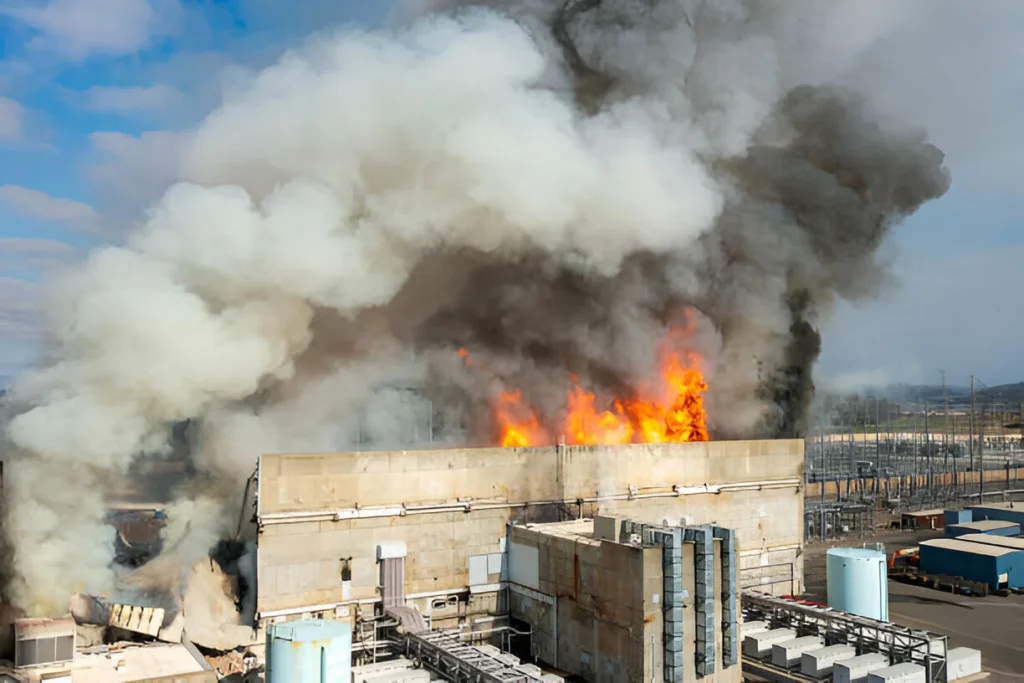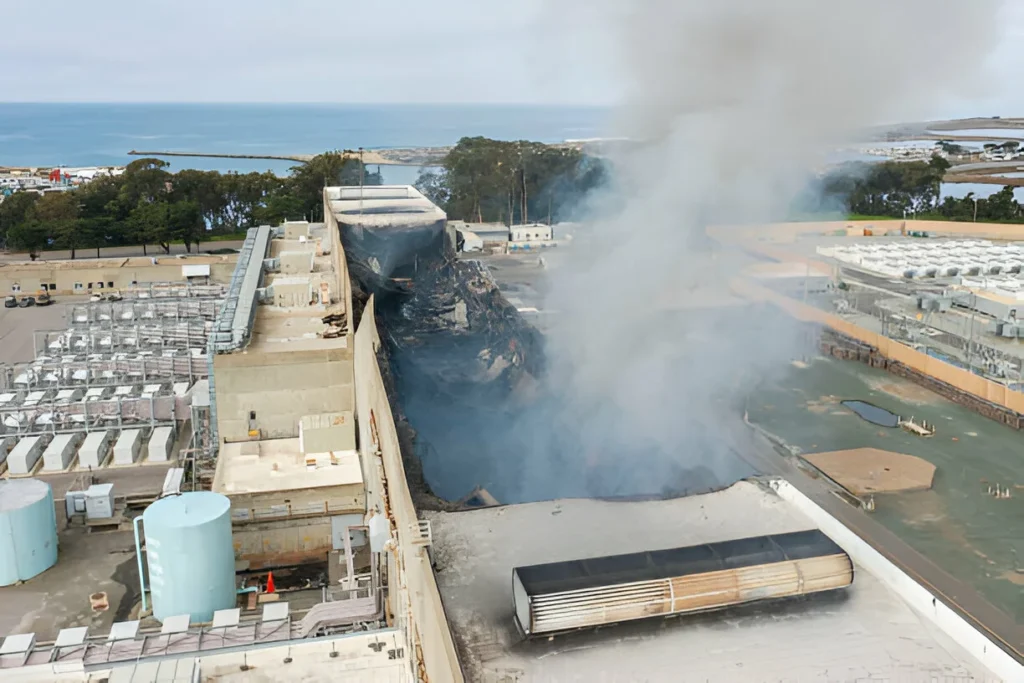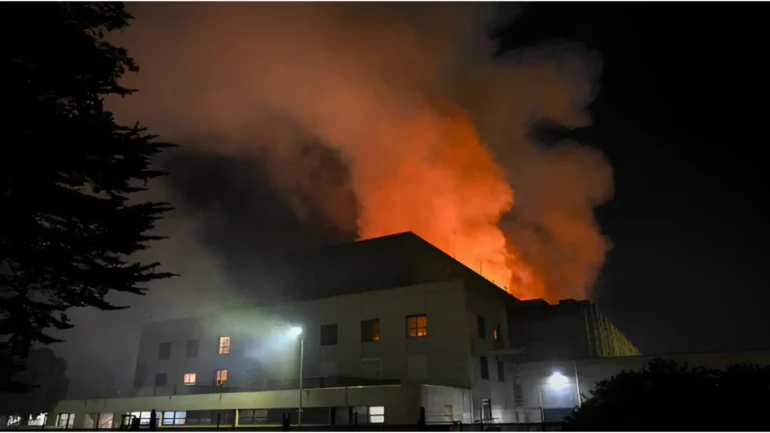Heavy metal poisoning of the soils underneath Elkhorn Slough was caused by the Moss Landing fire. Researchers most likely found high quantities of nickel, manganese, and cobalt from burning lithium-ion batteries. These contaminants threaten human as well as other species’ health. Battery storage fires are dangerous when it comes to the environment to which people send away the event. Damage is at present being determined by authorities and repairs are being organized.
What Happened at the Moss Landing Facility?
In January 2025, about 1,500 people evacuated the nearly 1,500 people in the Moss Landing battery storage facility when the Moss Landing fire started there. In response to the problem, emergency services included Monterey County Sheriff’s Office and North County Fire Protection District, which quickly reacted to establish control of the problem. The high energy density of lithium-ion batteries makes them a major challenge to eliminate, and their tendency to go critical and, upon burning furiously, to restart, even after what seems to have been dousing, can present special challenges. Such incidents require specific tactics to handle such cases and these factors hinder efforts of firefighting.

How Authorities Responded to the Moss Landing Fire
The Moss Landing fire at the battery storage shed caused evacuation orders for nearly 1,500 people out of concern for toxic emissions. Authorities also suggested towns surrounding Beit Lahia to stay home and cover windows as a precaution. It will bring about massive disruptions such as the closing of local offices and schools and the sealing of important highways such as Highway 1 and this will be accompanied with severe traffic problems.
Why Are They So Hazardous and Difficult to Control?
Lithium ion batteries are defined by a flammable electrolyte and other parts that can break or be overheated to spew dangerous gases (such as carbon monoxide and hydrogen fluoride). When a battery fire occurs, standard procedures include the wearing of protection clothing and use of firefighting tools because the heat and poisonous fumes produced by a battery fire severely affect the health of the public.

Assessing Environmental Concerns Following the Moss Landing Fire
After the January 2025 incident at the Moss Landing battery storage site, environmental concerns about this pollution have arisen. Heavy metals, such as cobalt, manganese, and nickel, which probably originated from fire pollution were found in high concentrations in the soils of Elkhorn Slough Reserve adjacent to the site. Levels of hydrogen fluoride and particulate matter were found in EPA’s first air quality studies to stay below reasonable ranges and therefore no immediate public health hazards are to be seen at this time. They have also voiced troubles for the future ecological effects, including for animals, and of the leakage of these pollutants into the food chain. However, these possible hazards are constantly observed in order to evaluate and control them.
Why This Estuary Is Vital to California’s Biodiversity
Elkhorn Slough is an important estuary on California’s central coast that straddles eelgrass beds, tidal marsh, and mudflats many ecosystems. As a vital habitat for 340 bird species including migrating birds and 340 fish species, as well as sea otters and harbor seals, it provides a major refuge for marine life. The slough is acknowledged to be important in ecology and is a State Marine Reserve and Conservation Area under continued protection of its unique ecosystems.

How Scientists Uncovered Heavy Metal Contamination in Elkhorn Slough’s Soils
Soon after the incident, San José State University’s Moss Landing Marine Laboratories went to 100 sites to sample soil, in investigating the environmental effects of the Moss Landing fire on Elkhorn Slough. Heavy metal contamination, of interest in part due to notably higher levels of nickel, manganese, and cobalt was found through analysis. From these results, it is inferred that Moss Landing fire related toxins became a part of the ecology of the slough. Most of the research programs currently underway are aimed at developing methods to assess long term environmental effects.
Identifying Nickel, Manganese, and Cobalt as Key Contaminants in the Soil
Among these are lithium-ion batteries which are based on lithium nickel manganese cobalt oxide (NMC) and blend in nickel, manganese and cobalt to increase energy density, voltage stability and thermal safety.
Researchers discovered these metals at levels higher by a thousand times the background levels in the soils of Elkhorn Slough during the Moss Landing fire, indicating massive pollution. Distribution of these pollutants through the slough’s ecosystem is illuminated in the distribution of the impacted sites visual map.

How Heavy Metals from the Moss Landing fire Spread Through the Environment
Combustion of lithium ion batteries can also cause the generation of strong heat that can break down metal oxides in the cathode and produce metal nanoparticles. These nanoparticles can be airborne by means of dry deposition or precipitation and can travel acres or kilometers, landing on surfaces. The environmental health and maybe food chains are influenced once they deposit; they may penetrate terrestrial ecosystems by following aquatic systems or soil particles via runoff.
Should Local Communities Be Worried About Exposure to These Contaminants?
Manganese, cobalt, and nickel may all aggravate respiratory conditions, neurological difficulties, and heart disease. Food, polluted water, and air alloys these metals into the body. To lower dangers, residents can avoid local seafood, use water filters, and enhance ventilation.
The Moss Landing fire draws attention to the unseen hazards to health and the environment resulting from battery storage events. Protection of ecosystems and communities depends on constant research and remedial actions. Enhanced safety rules and monitoring may help avoid incidents of contamination going forward.

